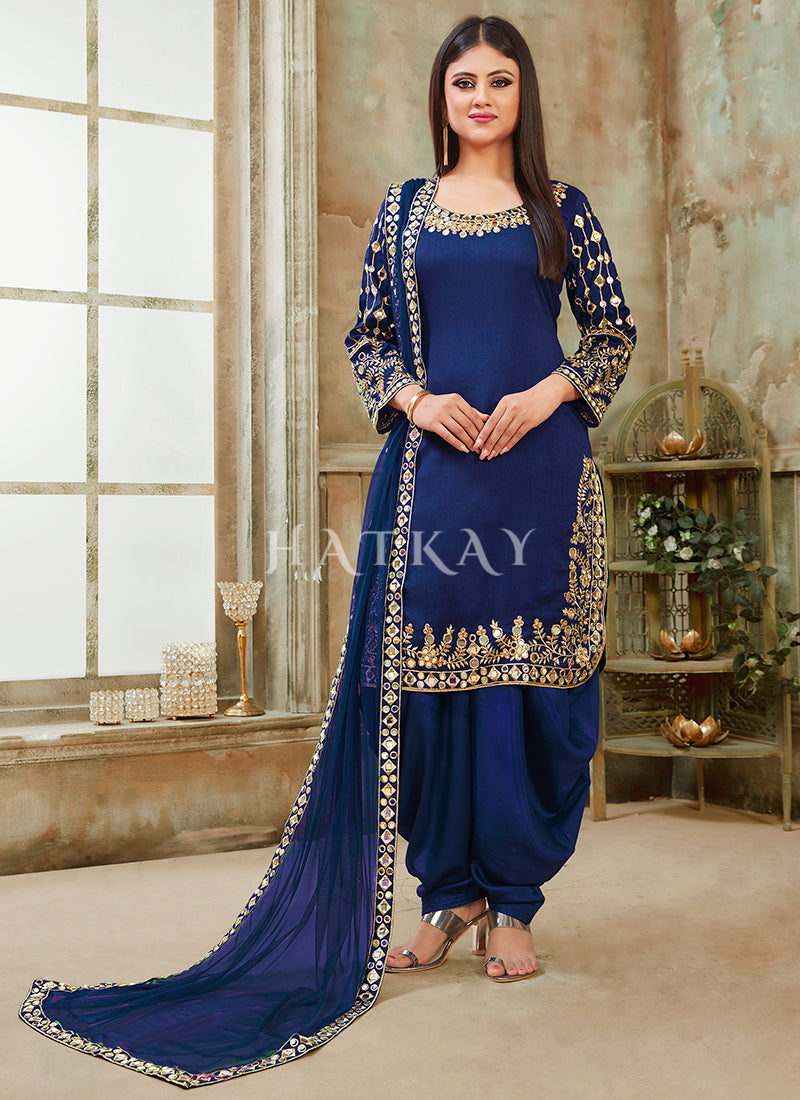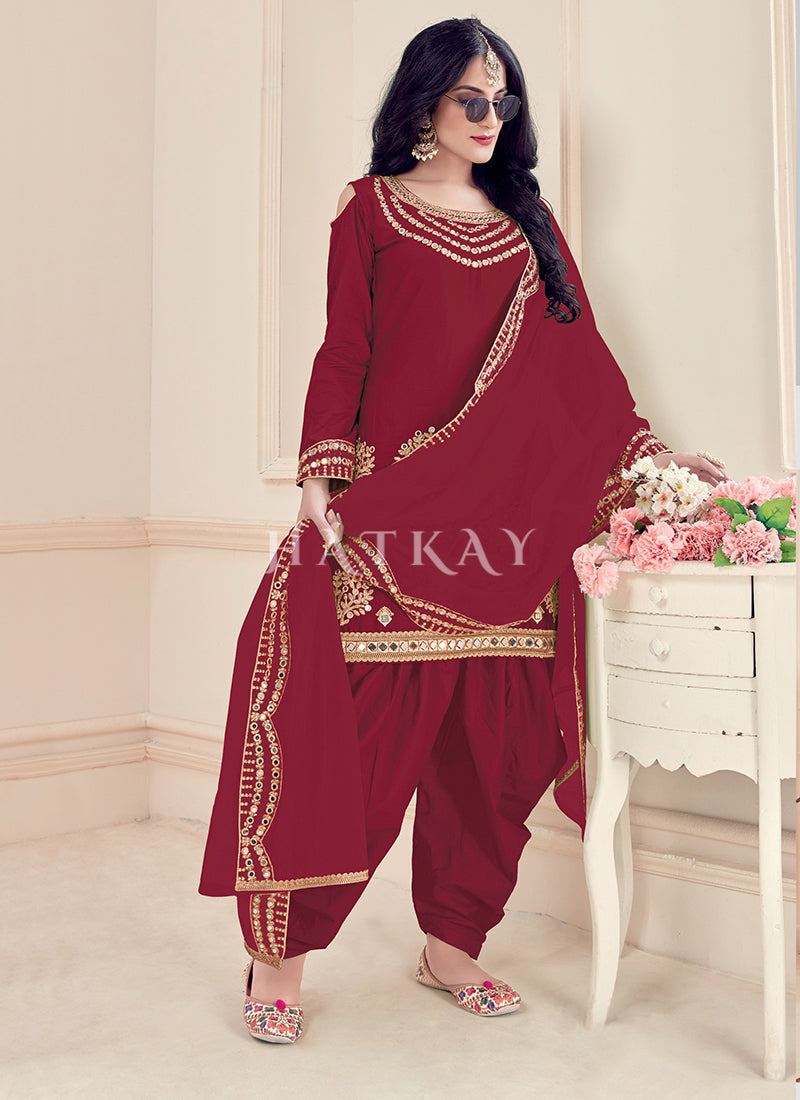Introduction:
In the kaleidoscope of Indian fashion, few ensembles exude the timeless elegance and cultural richness of Punjabi suits. Originating from the heartland of Punjab, these iconic outfits have transcended regional boundaries to become a beloved choice for women across India and beyond. With their graceful silhouette, vibrant colors, and intricate embellishments, Punjabi suits encapsulate the essence of tradition and sophistication. Join us as we embark on a journey through the captivating world of Punjabi suits, exploring their history, symbolism, and enduring allure.
The Origins of Punjabi Suits: A Glimpse into Tradition
Rooted in the rich cultural heritage of Punjab, Punjabi suits have a history that dates back centuries. Originally worn by women in rural Punjab, these ensembles were characterized by their simple yet elegant design, consisting of a long tunic (kameez), paired with loose-fitting trousers (salwar) and a matching dupatta (scarf). The attire was not just functional but also reflected the agricultural lifestyle of Punjab, allowing women to move with ease while working in the fields. Over time, Punjabi suits evolved to incorporate intricate embroidery, vibrant colors, and luxurious fabrics, becoming a symbol of cultural pride and identity.
The Elements of Punjabi Suits: A Closer Look
At the heart of every Punjabi suit lies its distinctive elements, each contributing to its timeless appeal and versatility. The kameez, or tunic, is often adorned with intricate embroidery, mirror work, or embellishments, adding a touch of elegance and glamour to the ensemble. The salwar, or trousers, come in various styles, including the traditional "Patiala" salwar with its pleated design and the sleek "churidar" salwar with its fitted silhouette. Finally, the dupatta completes the look, draping gracefully over the shoulders or head, and often embellished with matching embroidery or borders. Together, these elements create a harmonious ensemble that celebrates the beauty and craftsmanship of Punjabi culture.
Phulkari Embroidery: A Labor of Love
No discussion of Punjabi suits is complete without mentioning Phulkari embroidery, a traditional craft that has been passed down through generations in Punjab. Translating to "flower work," Phulkari is characterized by its vibrant colors, intricate patterns, and geometric designs, often depicting motifs inspired by nature and folklore. Historically worn by women as a symbol of prosperity and auspiciousness, Phulkari embroidery has evolved into a celebrated art form, adorning Punjabi suits with its exquisite beauty and cultural significance. Each Phulkari piece is a labor of love, with skilled artisans meticulously hand-stitching every thread to create intricate patterns and designs that reflect the rich cultural heritage of Punjab.
Modern Interpretations: Bridging Tradition and Fashion
While deeply rooted in tradition, Punjabi suits have also undergone a transformation to adapt to modern sensibilities. Contemporary designers have reinterpreted this timeless attire, infusing it with new colors, fabrics, and silhouettes to cater to evolving fashion preferences. From sleek, minimalist designs for the urban professional to fusion styles blending traditional elements with global influences, Punjabi suits continue to evolve while retaining their essence. Whether worn for weddings, festivals, or everyday wear, Punjabi suits offer a perfect blend of tradition and modernity, captivating fashion enthusiasts with their timeless elegance and versatility.
The Global Appeal of Punjabi Suits: From Punjab to the World
In recent years, the allure of Punjabi suits has transcended borders, gaining popularity not only among South Asians but also fashion enthusiasts worldwide. Celebrities, influencers, and designers alike have embraced this iconic ensemble, showcasing its beauty on red carpets, fashion runways, and social media platforms. From Bollywood stars gracing the silver screen in resplendent Punjabi suits to international celebrities making style statements at prestigious events, Punjabi suits continue to captivate audiences with their regal charm and timeless appeal.
Conclusion:
In a world where fashion trends may come and go, Punjabi suits stand as a testament to the enduring beauty and cultural richness of Punjab. From their humble origins in rural villages to their global appeal on fashion runways, these iconic ensembles celebrate the spirit of tradition, elegance, and sophistication. As we continue to embrace the beauty and diversity of Punjabi suits, let us also honor the artisans, designers, and generations past who have contributed to their timeless legacy. Whether worn as a symbol of cultural pride or a fashion statement, Punjabi suits remain an eternal symbol of grace, beauty, and tradition.













